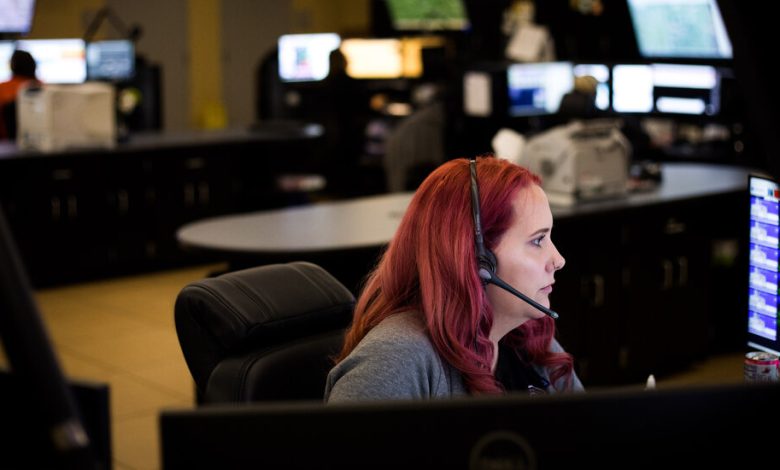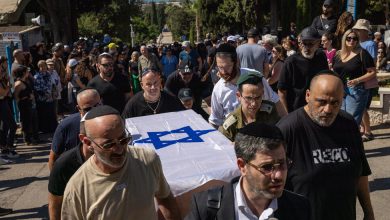The Wildly Popular Police Scanner Goes Silent for Many

The report crackled across the Indianapolis police radio on a recent morning: Two aggressive pit bulls, no leashes in sight, were roaming, a caller complained. Then came an alert about a motorist, possibly armed, en route to Indianapolis, reportedly with homicidal thoughts.
Later, the police were dispatched to look into reports of overdoses, suicidal people and domestic violence.
Through it all, hundreds of Indianapolis residents listened.
Once accessible to a relatively small number of emergency radio enthusiasts who invested in hardware and developed technical expertise, emergency dispatch channels have garnered huge audiences in recent years as websites and apps made tuning in as easy as turning on the television.
“I just love to listen because I want to know what’s going on,” said Bobbi Sue Hester, an Indianapolis resident who has listened to the police radio at night for 20 years. “I guess I’m a nosybody, you know?”
Ms. Hester may soon lose access to her evening pastime. Indianapolis, where the police channel is among the most listened to in the country, is one of several cities considering curtailing access to the real-time communication between dispatchers and emergency medical workers by encrypting those conversations. Encryption encodes a radio signal in a way that makes it accessible only to authorized users.
Denver, San Francisco, San Diego County, Baltimore, Chicago, New York and Sioux Falls are among the jurisdictions that have already encrypted radio signals to some degree. Minneapolis, whose police department has faced a lot of pressure to be more transparent and accountable, intends to adopt encryption next year.
Law enforcement officials say they long saw value in allowing a small number of civilians — journalists covering breaking news among them — to hear their communications. But as the numbers of listeners soared in a nation where true-crime shows and reality television are wildly popular, the risks of allowing unfettered access — at times including names, addresses and phone numbers — concerned public safety officials.
“The way it’s just completely open and uncensored right now does provide some risk to public safety and also can compromise people’s personal information and that of victims,” said Chief Brian O’Hara of the Minneapolis police, which has been upgrading its radios to adopt encryption next year.
Two recent incidents, Chief O’Hara said, argued for encryption. In one case, a search for a murder suspect was tracked and relayed on social media in real time, which Chief O’Hara said might have risked tipping off the suspect. In another, a report of an abducted college student went viral, stoking panic among students and parents for days, even though it was unfounded.
Press freedom groups and other organizations that advocate for government transparency have expressed alarm at the trend toward encryption. Greg Nojeim, director of the Security and Surveillance Project at the Center for Democracy and Technology, said police departments should find ways to mitigate privacy concerns without entirely cutting off access to these radio channels.
“There is a societal benefit to getting immediate information about emergency situations, and I think we should hesitate to adopt measures that would reduce that,” Mr. Nojeim said. “If there’s an active shooting in a neighborhood near mine, I want to know.”
Americans have long listened to emergency communication channels. A few decades ago, tuning in required buying a radio, outfitting it with a crystal and learning to set it to the desired frequency.
That all changed in 2012 after the launch of Broadcastify, a company that gathered thousands of emergency and aviation radio feeds and made them accessible to a constellation of websites and apps. Broadcastify and the platforms that rely on its feeds have free versions supported by ads and premium ones that are ad-free and provide access to archives.
Broadcastify’s founder, Lindsay Blanton, said his interest in police radios began in the 1980s after watching his grandmother spend hours glued to a radio in her home in Charlottesville, Va., riveted by police and firefighter calls.
“It’s very much in the American culture that small-town folks have scanners to keep an eye on what’s going on in their community,” he said. Older women are among the most devoted Broadcastify listeners, Mr. Blanton said.
At any given time, there are tens of thousands of people listening to emergency radio chatter on Broadcastify’s website and the commercial apps that rely on its feeds. During crises, like the Boston Marathon bombing in 2013 and the mass shooting during a concert in Las Vegas in 2017, the audience grows exponentially, Mr. Blaton said.
Adam Scott Wandt, a professor of public policy at John Jay College of Criminal Justice in New York, said he sees value in allowing journalists to monitor police radios to cover the news. But he said he was troubled by how many people now routinely listen in as the police respond to calls about domestic violence, sexual assaults, suicide attempts and pursuits of suspects.
“Let’s face it, we live in a time when true-crime shows and podcasts are fairly popular and there are a lot of true-crime enthusiasts who like to listen to live police broadcasts,” he said. “But we need to remember that not only are voyeurs listening, there’s potential for the shooter they’re searching for to be listening.”
Some cities and counties that have curtailed access to scanner traffic have adopted measures to keep the public informed.
When Las Vegas encrypted its police channel in 2018, it established a system for some journalists to retain access. After facing a backlash to its encryption plan, Chicago agreed to continue providing its feed to Broadcastify, but with a 30-minute delay. The San Diego County Sheriff’s Department began providing a log of emergency calls that excludes precise addresses and names.
In the Indianapolis area, which has a large and devoted community of emergency radio listeners, the subject of encryption has sparked heated debate this year. The city had an unusually high number of homicides in 2021 and 2022, focusing extra attention on crime. Police conduct, too, has drawn particular notice in the city this year, as police officers have fired weapons at people in at least 18 incidents.
Mike Hubbs, the director of the 911 center in Hamilton County in central Indiana, which adopted encryption in the summer, said dispatchers in the state have come to regard the large audience listening in on their work as an added stressor in a high-wire occupation.
“Within the law enforcement dispatching community, there’s tremendous support for encryption,” said Mr. Hubbs, who previously ran the Indianapolis 911 center from 2014 until last year.
At any given time, more than 800 people are listening to the Indianapolis police channel on Broadcastify and the Scanner Radio app.
The Rev. Charles Harrison, a United Methodist pastor, is a regular listener. He leads a group of residents who respond to crime scenes to support victims and to try to get at the root causes of violence. Keeping tabs on police operations in real time, Mr. Harrison said, has been crucial in his efforts.
Recent police shootings have strained trust between residents and officers, he said. The prospect of encryption — shutting down what residents can hear — worries him.
“I think it would heighten tension and distrust,” he said.
For Ms. Hester, the longtime listener from Indianapolis, encryption feels like a mistake for a different reason: The scanner has made her appreciate just how hard the work is.
“Those officers go through hell,” Ms. Hester said, who falls asleep at night listening to Broadcastify. “If people heard half the stuff we hear on the scanner, they would appreciate our officers to no end.”





